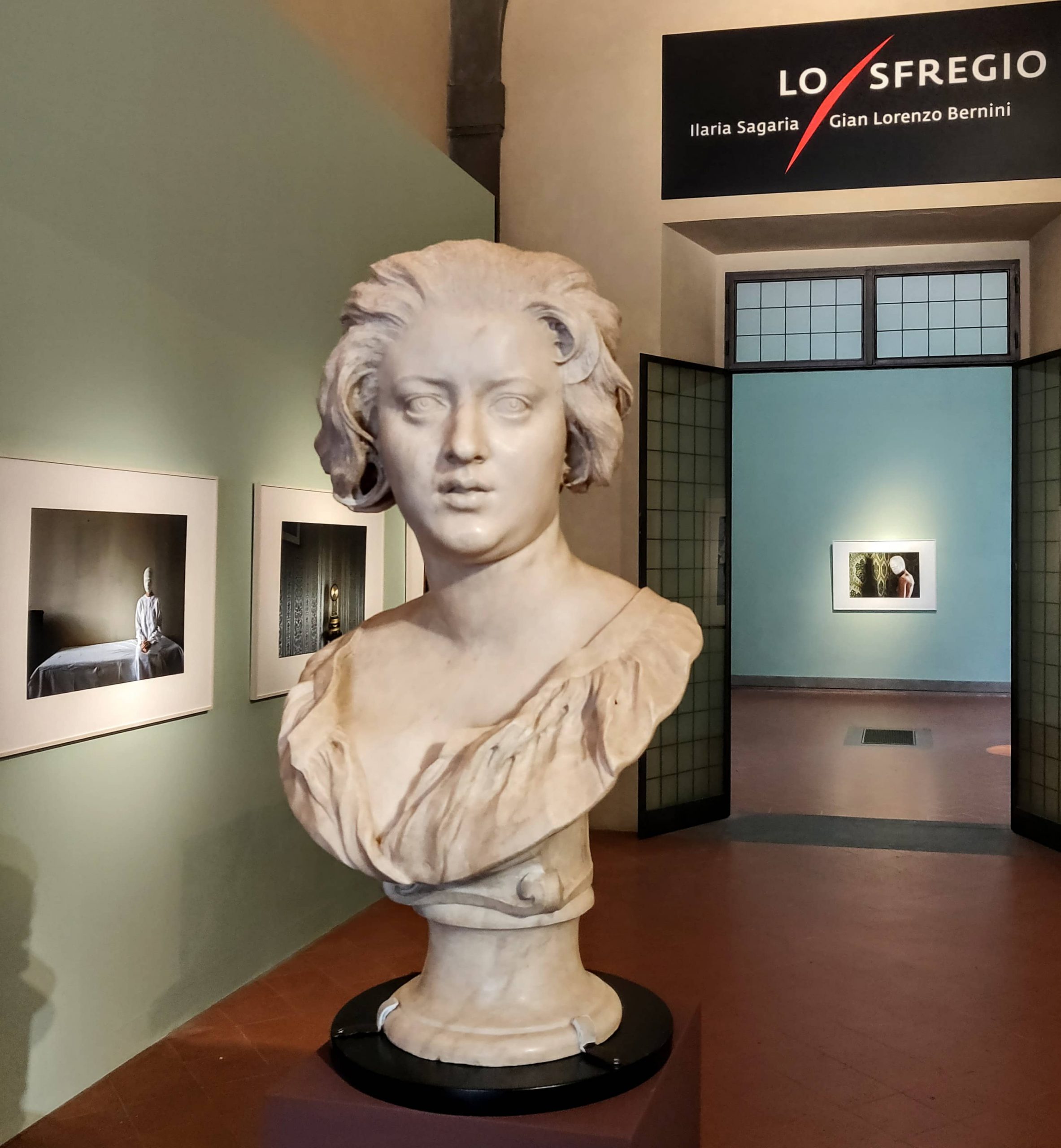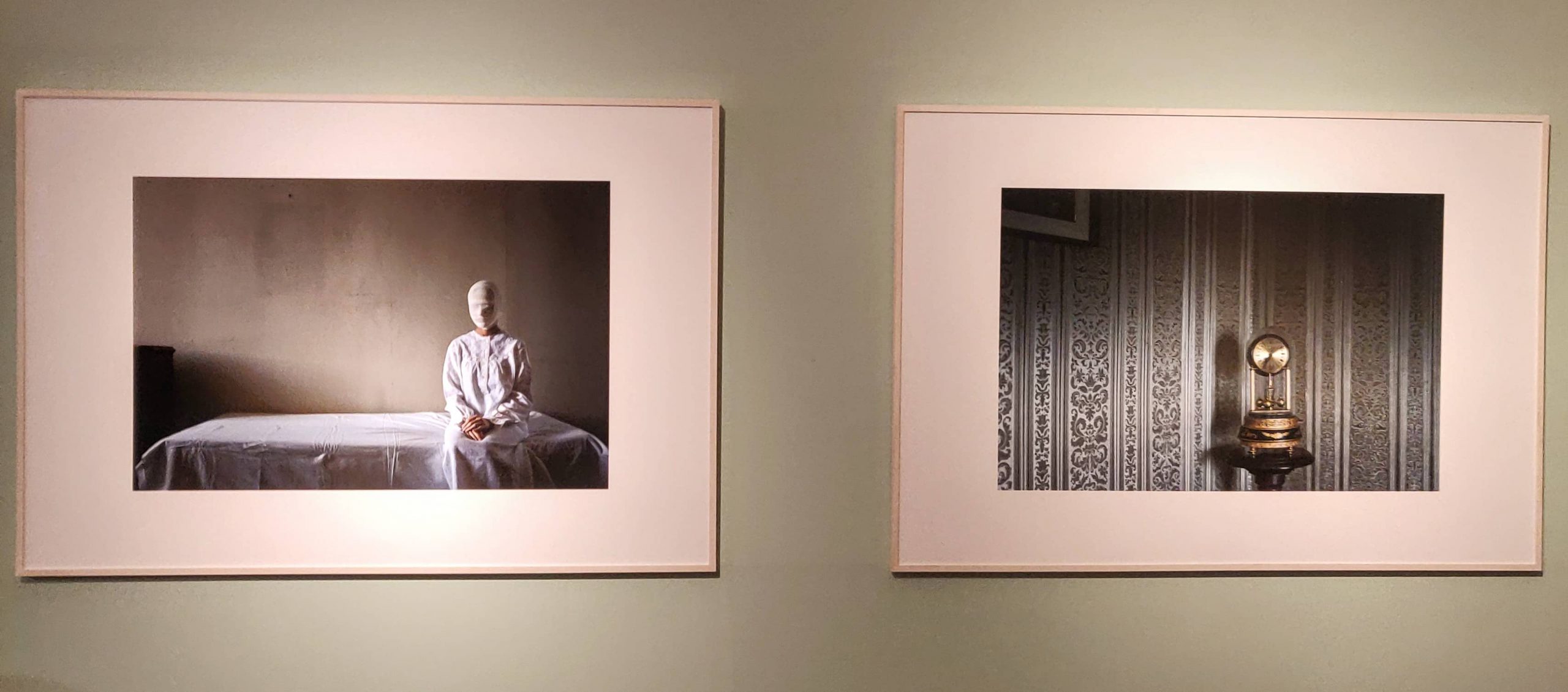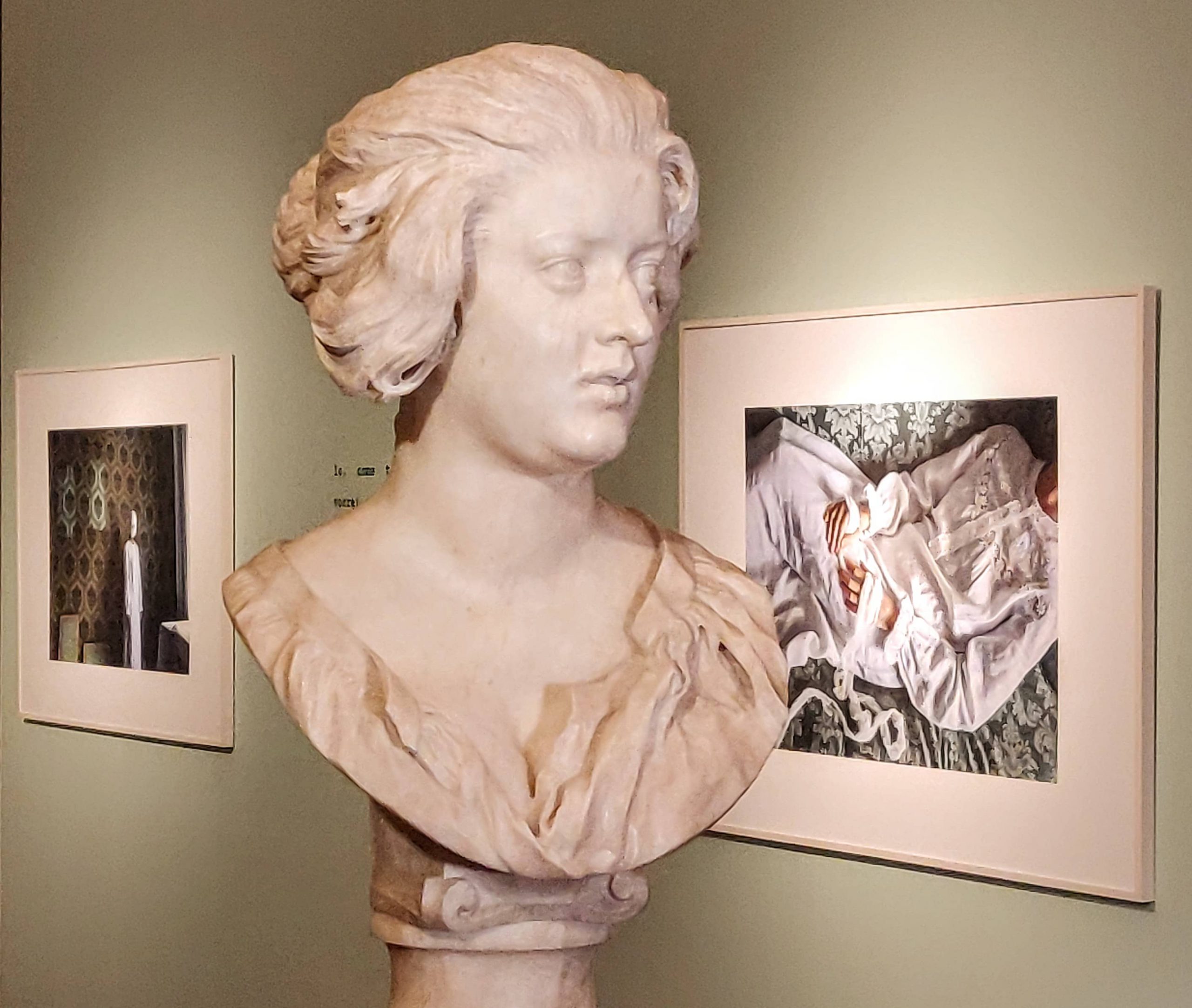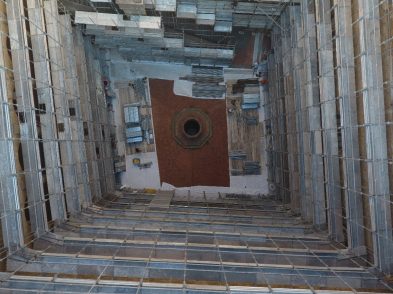Defaced statues and striking photography form the content of Lo Sfregio, a new exhibition opposing violence against women at the Uffizi Galleries. In the month of the International Day for the Elimination of Violence against Women (November 25), Gian Lorenzo Bernini’s bust of Costanza Piccolomini Bonarelli gives voice to a timeless issue alongside Ilaria Sagaria’s photographic exhibition titled Pain is not a privilege, which poetically tells the stories of the victims of acid attacks.

The marble sculpture (1637-38), on loan to the Uffizi from the Bargello, was created by Bernini to honour his lover, which he went on to deface in a fit of jealousy after discovering Costanza’s love for his brother, Luigi. Bernini continued his career without consequences, while Costanza was imprisoned in a convent for four months.
Ilaria Sagaria’s contemporary photographs of women disfigured by acid, their faces invisible or blindfolded, remind us that gender violence is a unchanging issue. Alongside Bernini’s bust, they recall how the crime suffered by Costanza is reenacted today in the more heinous cases of acid attacks. The victims’ faces are targeted, just as they were then, with corrosive substances that condemn them to physical and psychological torment.

“Acid violence is a global phenomenon that is not linked to ethnicity, religion, and even less to social and geographical position,” Sagaria commented in a press release. “Although cases have also been recorded against men, it remains a form of violence with a greater impact on women. In addition to the physical brutality caused by an inhumane act, there is psychological trauma to be faced: loss of identity, depression and isolation.”
“For the exhibition, the bust of Costanza Piccolomini Bonarelli underwent a restoration funded by the Uffizi Galleries. Now the work can be fully appreciated again thanks to this symbolic act of reparation against the damage of time,” director of the Uffizi Galleries, Eike Schmidt, stated. “We look at it not only as a masterpiece by one of the greatest Baroque sculptors, but we are also invited to reflect on the brutal violence of the strong against the vulnerable.”

Filomena Lamberti, a victim of acid violence and testimonial for the Spaziodonna association in Salerno; Petra Filistrucchi, vice-president of the Artemisia anti-violence centre in Florence; and Jaf Shah, executive director of Acid Survivors Trust International, gave their testimonies at the presentation of the exhibition. Also present was Paola d’Agostino, director of the Bargello Museums; Valdo Spini, board member of the Uffizi Gallery; Chiara Toti, exhibition curator; and Ilaria Sagaria.







